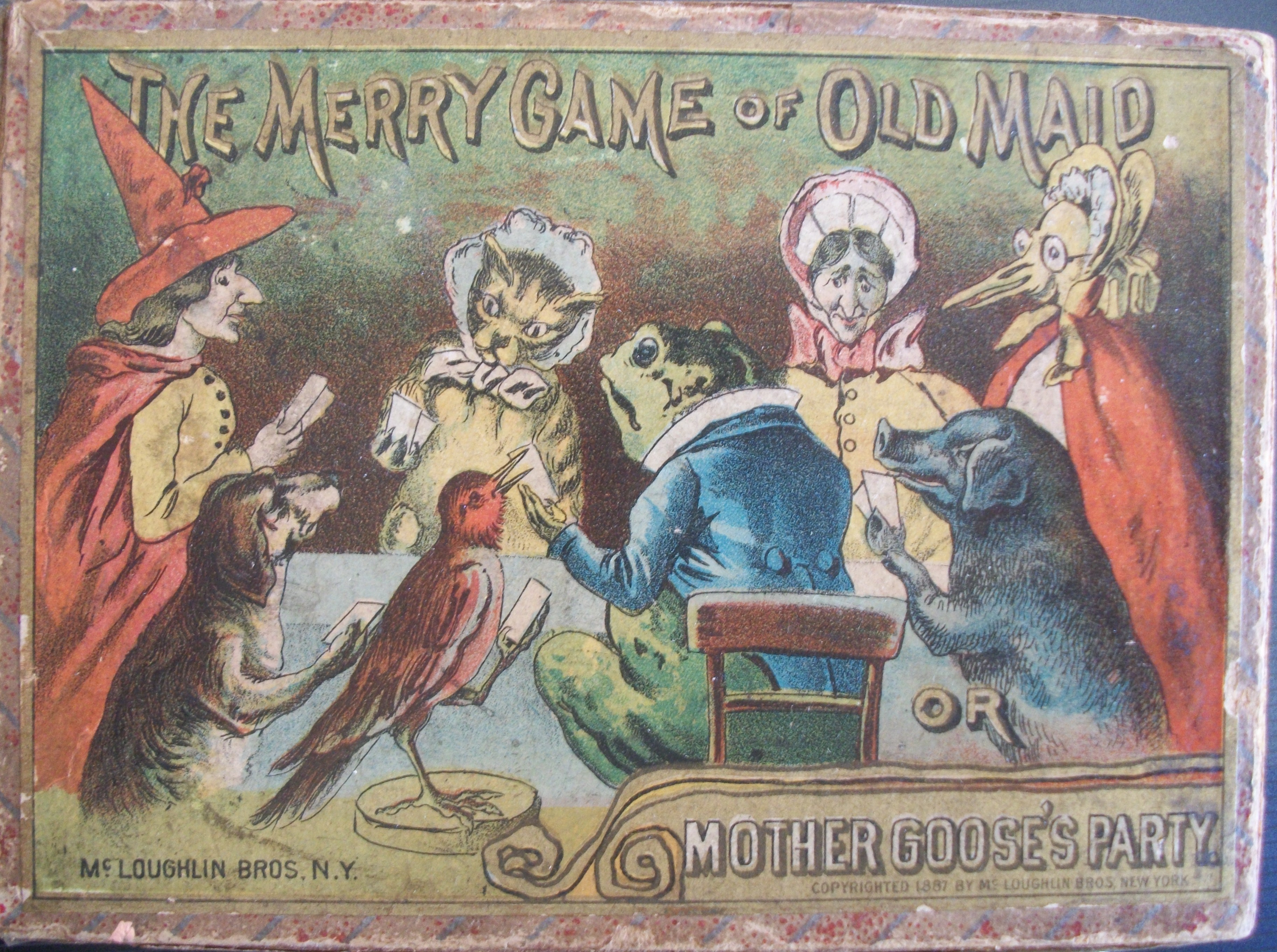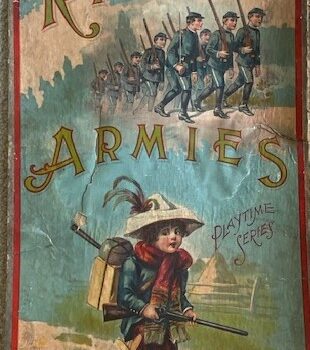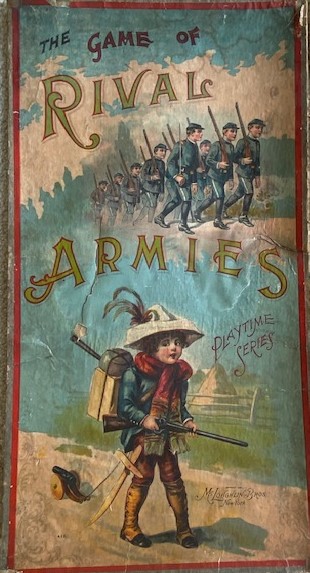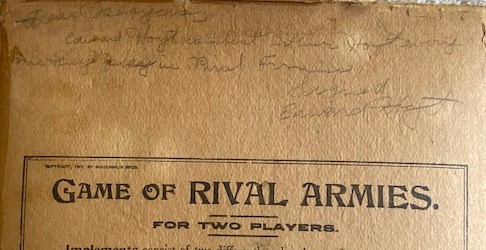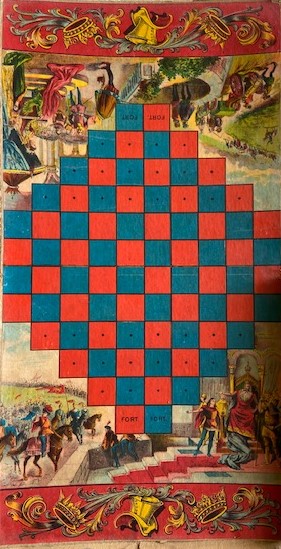I love collecting old board games. They are treasures of the past. One of the special things about the 1901 Game of Rival Armies in my collection is a message written in pencil on the inside cover by a past owner of the game. It says,
“Dear players, Edward Hoyt can beat Arthur Hoyt every time they play in Rival Armies. Signed, Edward Hoyt.”
Too funny. Seems some ‘rival armies’ there in the family.
Being a Mcloughlin Bros. board game, it is not surprising the cover of the box is an attractive addition to my game collection. Mcloughlin games are loved for their colorful, appealing, and beautiful box covers and boards. The board of Rival Armies is a pasted image to the box bottom inside. It too offers an appealing display with intricate scenes on each side of the player’s board.
On the back of the cover are instructions for play. Also included is a quick summary of the game:
Rival Armies, while easy to play, affords lots of chances for the exercise of skill. The power of jumping over his own piece enables a player, who can move them out in the proper array, to make sweeping jumps and captures as the game progresses, thus clearing his way to the opponent’s Forts; and when the opponent is able to retaliate with equal vigor, the contest is very spirited.
The game consists of two sets of 20 men. Each with 6 Generals and 14 Regiments. The Generals are larger game pieces than the Regiments.
The object of the game is to get any two pieces on the two squares marked FORTS of an opponent. The first to do so wins the game.
To setup game play, the Generals are positioned in the back, with two pieces in the Forts. The Regiments are placed in the two rows in front of the Generals. This leaves the center four rows empty at start. (the rows without the dots)
Players take turns by either making a Move or a Jump.
Generals can go in any direction, one square at a time, or by jumping over another game piece or pieces (own or opponent).
Regiments can only move and jump forward (toward the opponent).
If a player jumps over an opponent’s piece or pieces, as in checkers, it is taken off the board.
And as in Chinese checkers, if jumping over a player’s own piece, it remains. Setting up opportunities to traverse the board towards the opponent’s Forts is advantageous.
The mixture of a player’s moves makes it a wonderful game to pull down off the shelf and play, still over 100 years later.
Play a game, any game, today!
